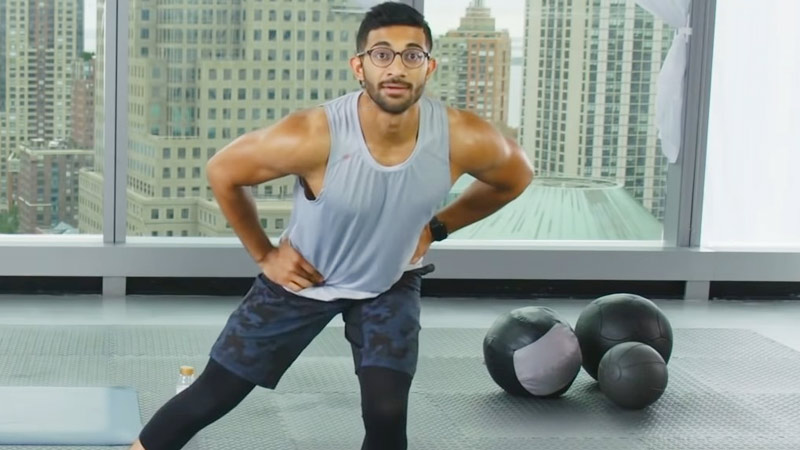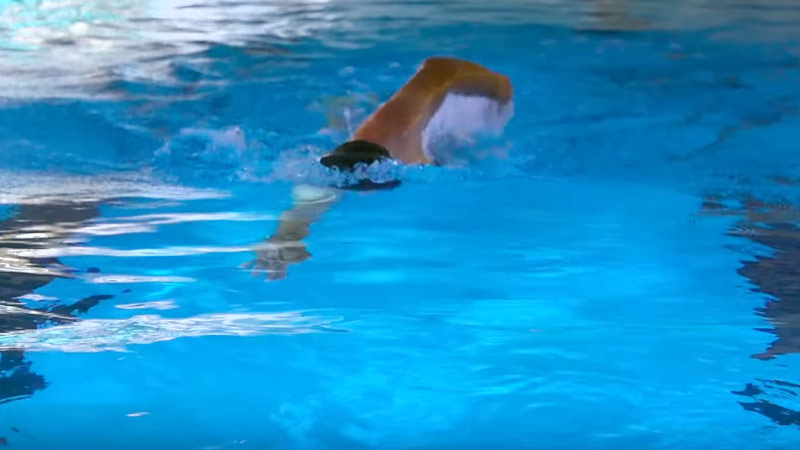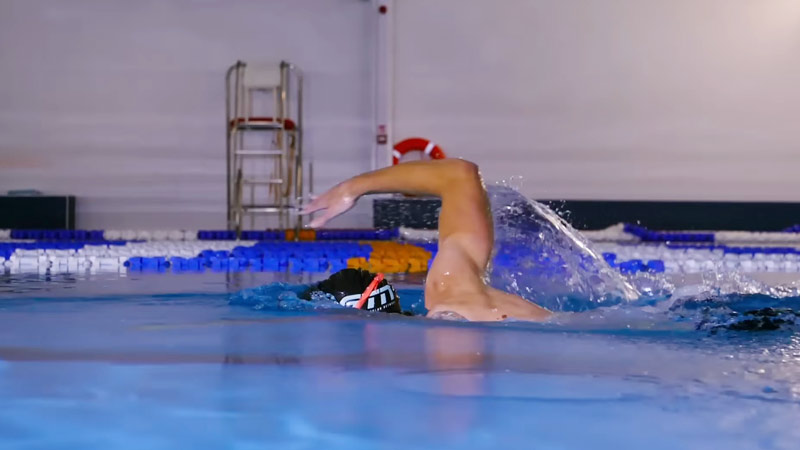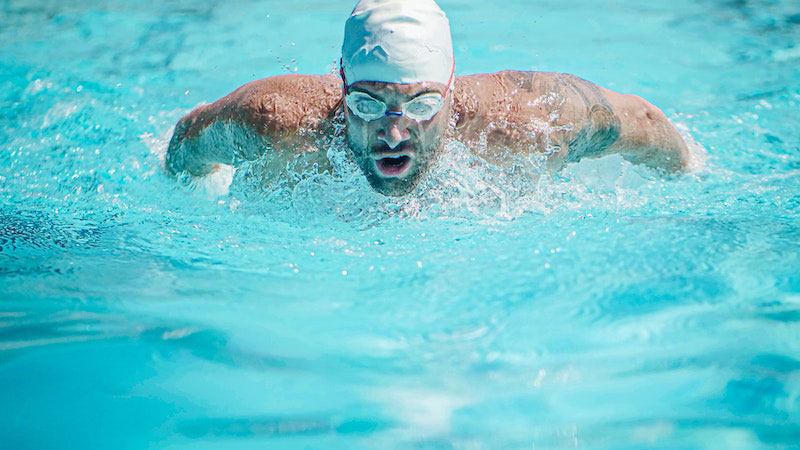Embarking on a journey toward a healthier lifestyle often involves exploring diverse forms of exercise. Swimming, a beloved aquatic activity, not only offers a refreshing escape but also serves as an excellent cardiovascular workout.
In this blog post, we delve into the intriguing question: Does swimming make your heart beat faster? From the mechanics of swimming heart rate to its impact on overall cardiovascular health, we’ll uncover the physiological intricacies.
Whether you’re a novice eager to dip your toes into the world of swimming or a seasoned swimmer seeking deeper insights, join us as we navigate the waters of heart health and the transformative effects of this buoyant exercise.
Does Swimming Make Your Heart Beat Faster?
There are many reasons why you have a high heart rate after swimming. Yes, swimming is a cardiovascular exercise that can increase your heart rate.
When you swim, your muscles work to move your body through the water, and this requires oxygen. To meet the increased demand for oxygen, your heart pumps more blood, leading to an elevated heart rate.
Swimming is an excellent aerobic exercise that not only works the muscles but also improves cardiovascular fitness.
It is a full-body workout that engages various muscle groups, enhances endurance, and promotes overall cardiovascular health. The intensity of the exercise can vary depending on factors such as style for swimming heart rate, speed, and duration.
If you swim at a brisk pace or engage in more challenging strokes, your heart rate is likely to increase even more.
Keep in mind that the benefits of swimming for cardiovascular health can vary from person to person based on factors such as fitness level, age, and overall health.
Before starting any new exercise routine, it’s advisable to consult with a healthcare professional, especially if you have any pre-existing health conditions.
Understanding Cardiovascular Exercise

Cardiovascular exercise, often referred to as cardio, is any exercise that raises your heart rate and enhances the efficiency of your cardiovascular system.
This type of exercise primarily targets the heart and lungs, improving their function and promoting overall cardiovascular health.
Here are some key aspects to understand about cardiovascular exercise:
Heart Rate Increase
Cardiovascular exercises increase your heart rate, causing your heart to pump blood more efficiently. This helps improve the circulation of oxygenated blood to various parts of the body.
Aerobic Exercise
Cardio exercises are generally aerobic, meaning they involve sustained, rhythmic activities that stimulate and strengthen the heart and lungs. Examples include running, cycling, swimming, and brisk walking.
Endurance Improvement
Regular cardiovascular exercise helps enhance endurance over time. Endurance is the ability of your muscles and cardiovascular system to sustain an activity for an extended period without fatigue.
Calorie Burn
Cardiovascular exercises are effective for burning calories, which can contribute to weight management and fat loss when combined with a healthy diet.
Types of Cardiovascular Exercise
- Running/Jogging: Running is a high-impact exercise that significantly elevates heart rate.
- Cycling: Whether outdoors or on a stationary bike, cycling is a low-impact cardio option.
- Swimming: A full-body workout that is gentle on the joints due to the buoyancy of water.
- Brisk Walking: An accessible and low-impact form of cardiovascular exercise.
- Aerobic Classes: Dance, step aerobics, and other group classes can provide a fun and social way to get your heart pumping.
Frequency and Duration
The American Heart Association recommends at least 150 minutes of moderate-intensity aerobic exercise or 75 minutes of vigorous-intensity exercise per week, spread throughout the week.
This translates to about 30 minutes a day, five times a week.
Intensity Levels
The intensity of cardiovascular exercise is often measured as a percentage of your maximum heart rate. Activities can be classified as moderate-intensity or vigorous-intensity.
Warm-Up and Cool Down
It’s essential to start and finish each cardiovascular session with a warm-up and cool-down. The warm-up prepares your body for exercise, and a cool-down helps gradually lower your heart rate and prevent stiffness.
Remember, it’s crucial to choose cardiovascular exercises that you enjoy, as this increases the likelihood of sticking to a regular routine.
Before starting any new exercise program, especially if you have pre-existing health conditions, consult with a healthcare professional to ensure it’s safe for you.
The Mechanics Of Heart Rate After Swimming

The mechanics of heart rate after swimming are influenced by various factors, including the intensity and duration of the swim, the swimmer’s fitness level, and individual physiological differences.
Here’s a general overview of how heart rate responds after swimming:
Immediate Post-Exercise Period
- Elevated Heart Rate: After swimming, your heart rate is generally elevated. During the swim, your heart works harder to pump blood and oxygen to the muscles engaged in the activity.
- Immediate Recovery: Initially, in the minutes following the swim, your heart rate gradually starts to decrease as your body moves from a state of high exertion to a resting state.
Cool Down Period
- Gradual Decrease: If you include a proper cool-down in your heart rate swimming routine, it can contribute to a gradual decrease in heart rate. This phase allows your body to transition more smoothly from exercise to a state of rest.
- Cooling Down the Body: The cool-down period involves swimming at a slower pace or performing gentle, rhythmic movements. This helps to gradually lower your heart rate, prevent blood pooling in the extremities, and promote flexibility.
Recovery Phase
- Post-Exercise Oxygen Consumption (EPOC): After intense exercise like swimming, there may be an elevated post-exercise oxygen consumption (EPOC) phase. This is sometimes referred to as the “afterburn,” where the body continues to consume oxygen at an elevated rate to restore physiological functions to their pre-exercise state.
- Caloric Expenditure: The EPOC phase contributes to additional caloric expenditure as the body works to replenish energy stores, clear metabolic byproducts, and restore oxygen levels.
Individual Variations
- Fitness Level: Individuals with higher fitness levels often experience quicker recovery times, and their heart rate tends to return to resting levels more efficiently.
- Hydration and Nutrition: Proper hydration and nutrition play a role in the recovery process. Dehydration can prolong the recovery period, while adequate hydration supports the body’s ability to recover.
Heart Rate Monitoring
- Use of Heart Rate Monitors: Many swimmers use heart rate monitors to track their heart rate during and after swimming. Monitoring heart rate can provide insights into the intensity of the workout and the efficiency of recovery.
It’s important to note that individual responses to exercise can vary. Factors such as age, overall health, and specific health conditions can influence how the heart rate responds to swimming and other forms of exercise.
If you have concerns about your heart rate or exercise recovery, it’s advisable to consult with a healthcare professional.
Benefits of Swimming on Heart Health

Swimming offers numerous benefits for heart health, making it an excellent cardiovascular exercise. Here are some of the key advantages:
Improved Cardiovascular Fitness
Swimming is an aerobic exercise that elevates the heart rate, enhancing cardiovascular fitness.
Regular swimming can strengthen the heart muscle, improve blood circulation, and increase the efficiency of oxygen delivery to the body’s tissues.
Lowering Blood Pressure
Consistent swimming can contribute to the maintenance of healthy blood pressure levels. It helps reduce the workload on the heart by promoting more efficient blood flow and improving the elasticity of blood vessels.
Weight Management
Swimming is an effective calorie-burning exercise that can aid in weight management and contribute to maintaining a healthy body weight. Maintaining a healthy weight is important for overall heart health.
Reduced Risk of Heart Disease
Engaging in regular swimming has been associated with a lower risk of heart disease. The cardiovascular benefits, along with improvements in cholesterol levels and blood pressure, contribute to a healthier heart.
Cholesterol Management
Swimming can help manage cholesterol levels by increasing the levels of “good” HDL cholesterol and reducing levels of “bad” LDL cholesterol.
This can contribute to a lower risk of atherosclerosis and coronary artery disease.
Stress Reduction
Swimming has been shown to have stress-reducing effects. Stress can have negative impacts on heart health, and activities like swimming that promote relaxation and stress relief can indirectly benefit the cardiovascular system.
Enhanced Respiratory Function
Swimming involves controlled breathing, which can help improve respiratory function. Efficient breathing techniques contribute to better oxygen exchange and can be particularly beneficial for individuals with respiratory conditions.
Whole-Body Workout
Swimming engages multiple muscle groups simultaneously, providing a comprehensive and low-impact full-body workout.
This not only promotes muscle strength and endurance but also contributes to overall cardiovascular health.
Improved Circulation
The rhythmic movements involved in swimming stimulate blood circulation throughout the body.
This improved circulation can have positive effects on various bodily functions and contribute to overall cardiovascular well-being.
Joint-Friendly Exercise
Swimming is a low-impact exercise, making it gentle on the joints. This is particularly beneficial for individuals with joint conditions or those seeking an exercise option that minimizes stress on the joints.
It’s important to note that individual health conditions and fitness levels can influence the extent of these benefits.
Before starting a new exercise program, including swimming, it’s advisable to consult with a healthcare professional, especially if you have pre-existing health concerns or conditions.
FAQs
Why do I have a high heart rate while swimming?
Swimming engages multiple muscle groups, demanding increased oxygen delivery.
As your body works harder to meet this demand, your heart rate rises to supply oxygen-rich blood. Additionally, water’s cooling effect can prompt the heart to pump more vigorously.
What should be the regular heart rate when swimming?
A normal heart rate while swimming varies based on factors like age, fitness level, and swimming intensity.
On average, it may range from 120 to 150 beats per minute. Consult with a healthcare professional to determine your target heart rate zone.
What causes heart palpitations after swimming?
Post-swimming heart palpitations could result from a sudden change in body temperature, dehydration, or an electrolyte imbalance.
Vigorous swimming may also trigger the release of adrenaline, temporarily elevating heart rate. If palpitations persist or are severe, seek medical advice.
Are swimming and heart health related?
Yes, swimming is an excellent exercise for heart health. It enhances cardiovascular fitness, strengthens the heart muscle, and improves circulation.
Regular swimming can contribute to lower resting heart rates, reduced blood pressure, and overall cardiovascular well-being.
Does swimming increase heart rate?
Yes, swimming increases heart rate as it engages large muscle groups, demanding more oxygen. The cardiovascular system responds by pumping blood efficiently, elevating heart rate.
This cardiovascular workout not only strengthens the heart but also improves overall cardiovascular endurance and fitness.
Wrapping Up
In conclusion, the rhythmic strokes of swimming not only propel you through the water but also propel your heart into a healthier beat.
The benefits extend beyond the pool, influencing cardiovascular fitness, weight management, and stress reduction. Whether you prefer leisurely laps or high-intensity intervals, swimming offers a versatile path to heart health.
So, dive in, make a splash, and let the gentle waves of swimming carry you toward a stronger, healthier heart.







